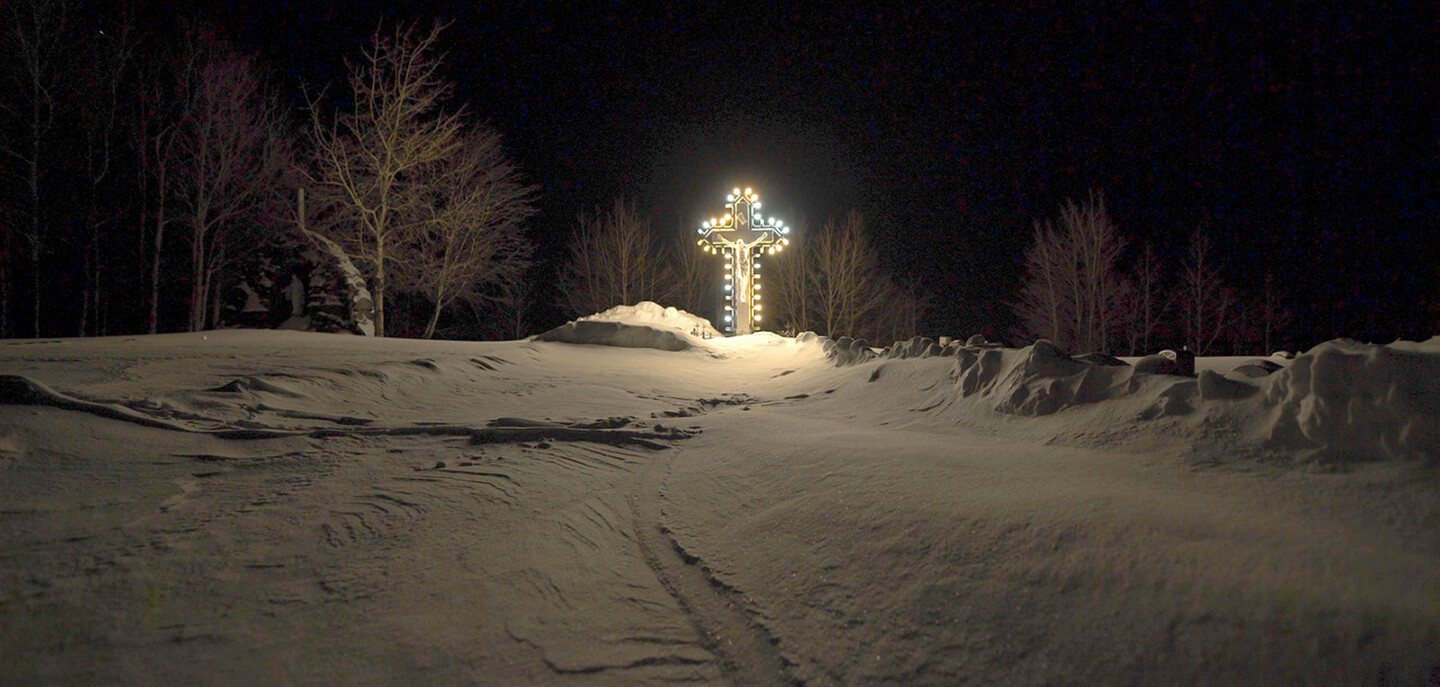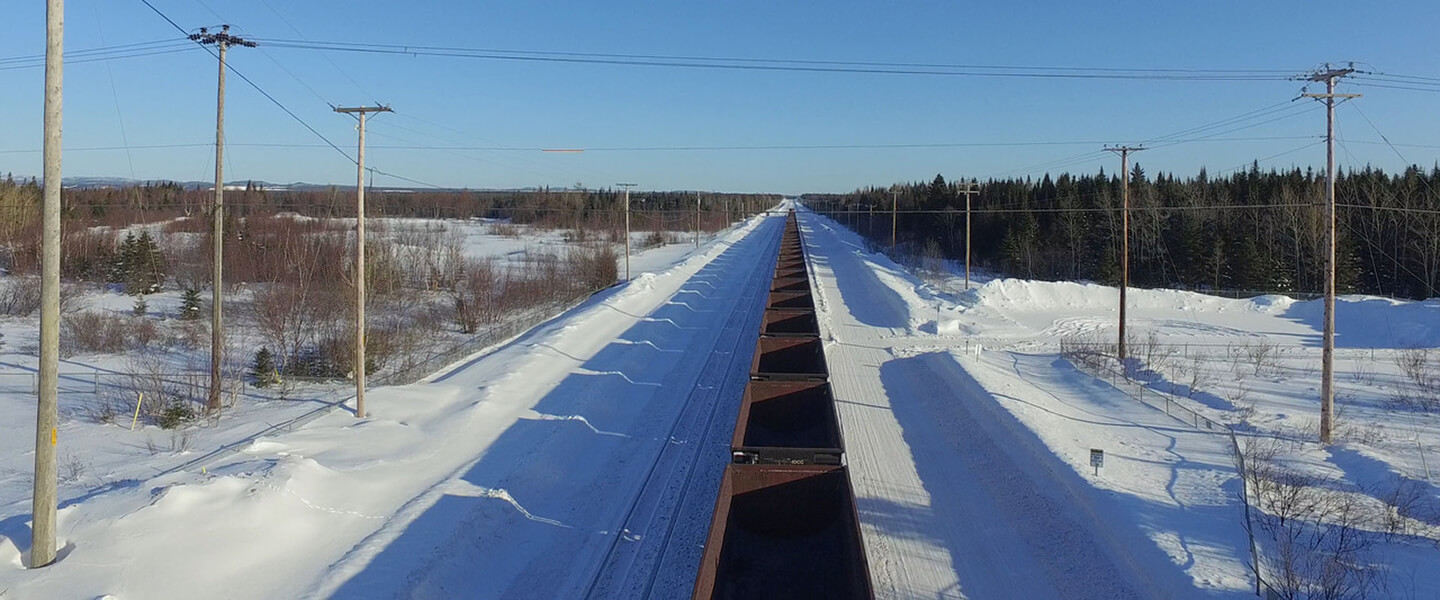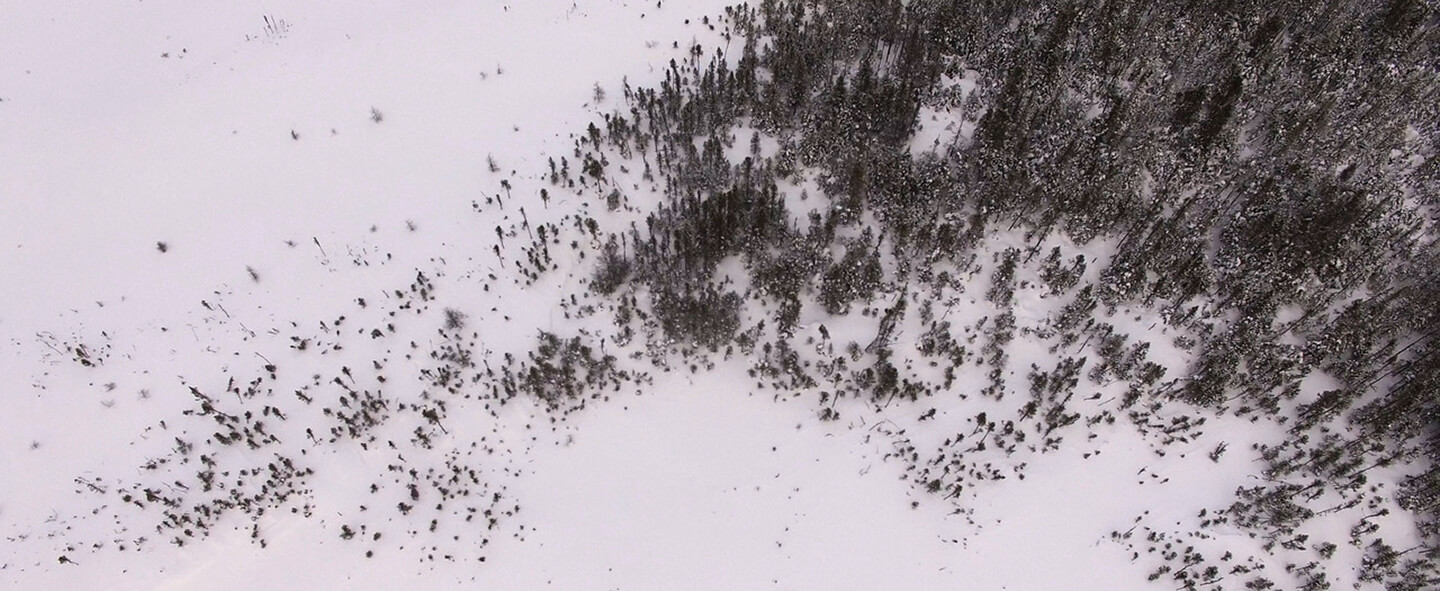Éli Laliberté
in Matapédia
EXHIBIT
Fortune Telling for the Territory
Église Saint-Laurent-de-Matapédia | 1 Rue du Carillon | Matapedia
Éli Laliberté, Maria (Québec)
Fortune Telling for the Territory invites us to rethink our relationship with the territory, its weakened past and present. Éli Laliberté crisscrossed the North Share and the Gaspé Peninsula to capture images that carry within them the story of Native reserves and natural reserves, revealing the colonization of the territory and of thought.
The photographs make visible the cracks that mark the spaces, both physically and symbolically: the power lines, the roads and the railroads are evocative traces of frictions and disputes. They reveal a flaw in the territory, near and distant, that they pass through: a flaw in its identity, a flaw in its relationship with places and with their history. Behind the immediate landscape, these images are bearers of chaos. Associated with a text by Philippe Ducros, they evoke historical and current ecological and social issues at the heart of this vast territory of Québec’s eleven aboriginal nations and of a healing process for indigenous communities.
These pictures were originally produced for the play La Cartomancie du territoire, written and directed by Philippe Ducros.
EXHIBIT AT RENCONTRES
Fortune Telling for the Territory
Producer, screenwriter, director, photographer and director of photography, Éli Laliberté has devoted more than 25 years of his life to producing documentaries. First Nations realities have been at the core of his work for over 20 of those years.
In 2017 he received a Gémeaux award in the category Best Director of Photography – Documentary for 1000 Days for the Planet, and was nominated in 2018 for a Canadian Screen Award in the Best Factual Series category for his latest production, Konnected.tv.
Entering the fragile places of chaos
CHAOS reflects on a planetary environment undergoing profound change. Affecting both towns and nature, chaos operates in a more muted way in jeopardized areas: northern aboriginal territories captured by Elena Perlino and Éli Laliberté; tourism in India, by Martin Parr; accelerated urbanization in Brooklyn studied by Mathilde Forest and Mathieu Gagnon; or in the Gaspé Peninsula, the marks of a long-gone mining operation or a railroad documented by Myriam Gaumond and Martin Becka. Together, they are all revealing of those threats that pervade the landscape and the existence of each one of us today.



